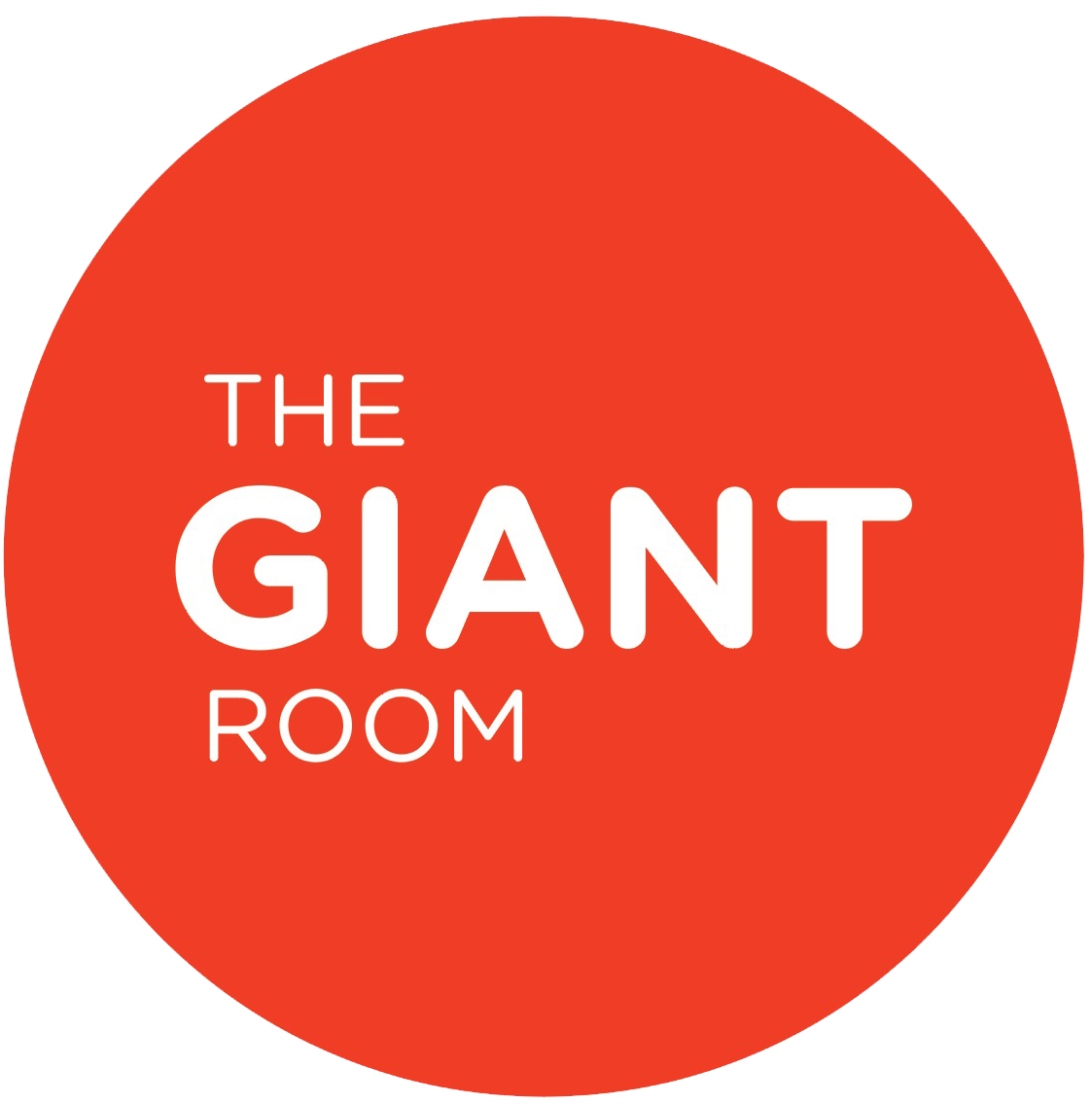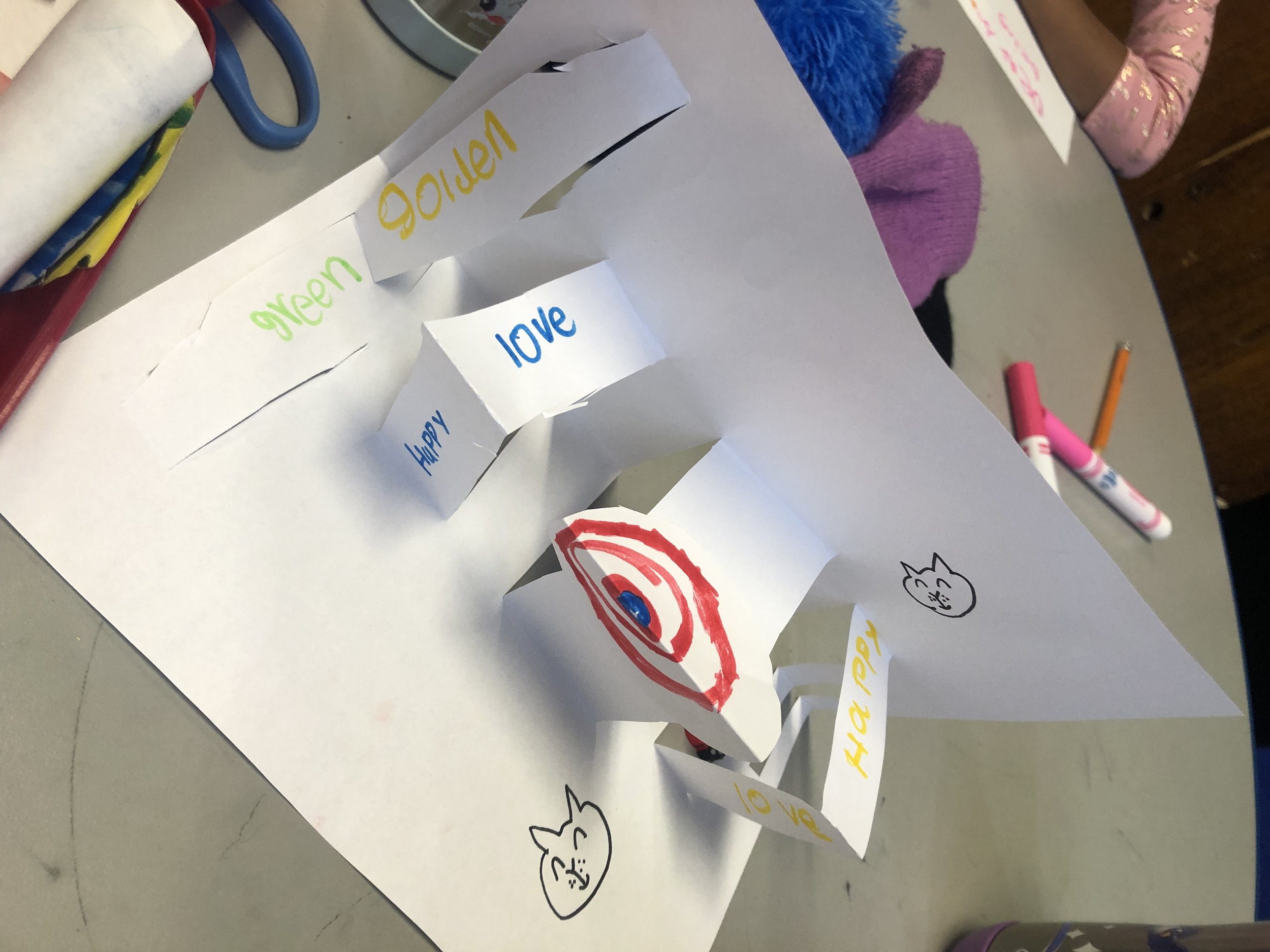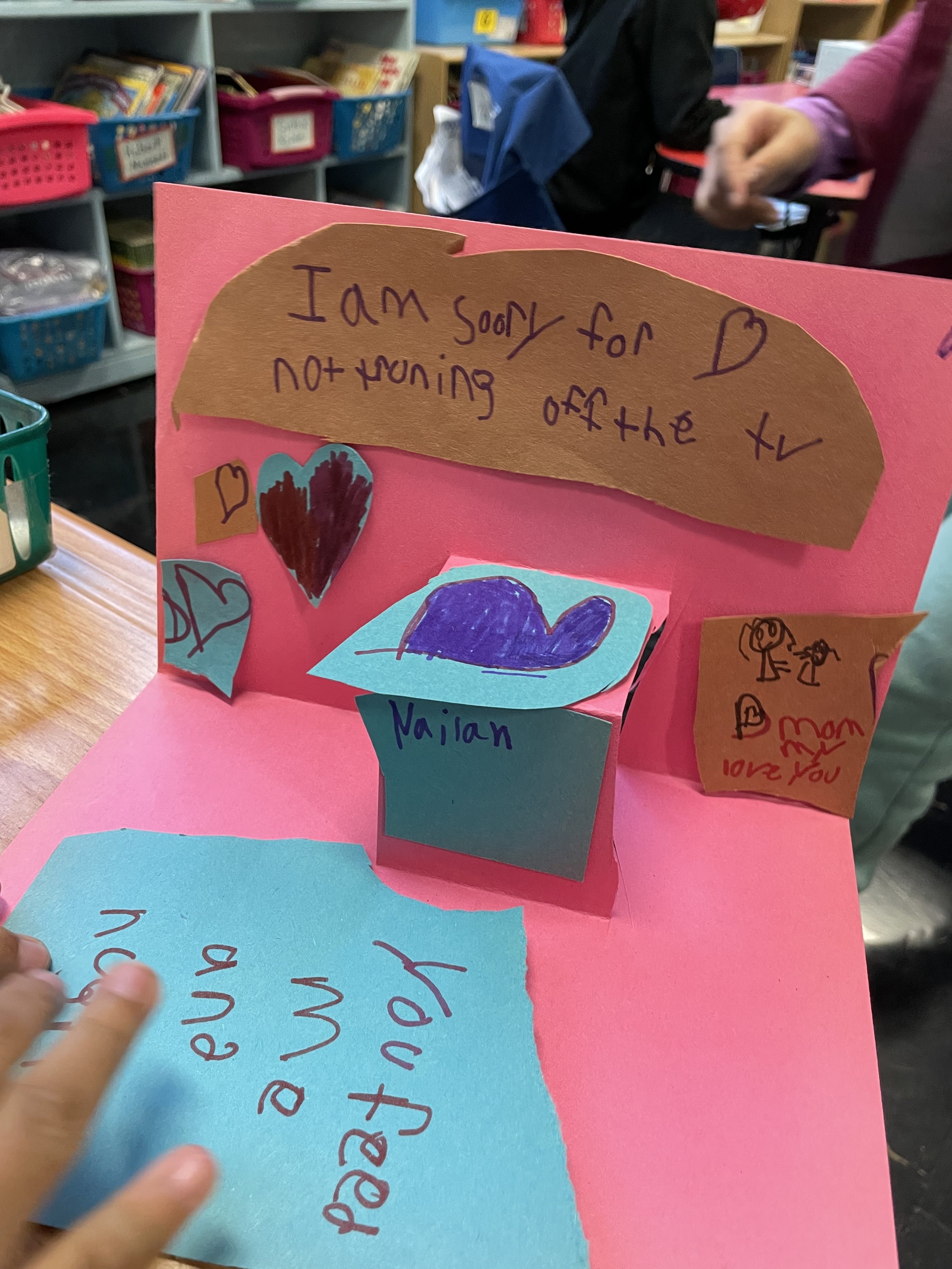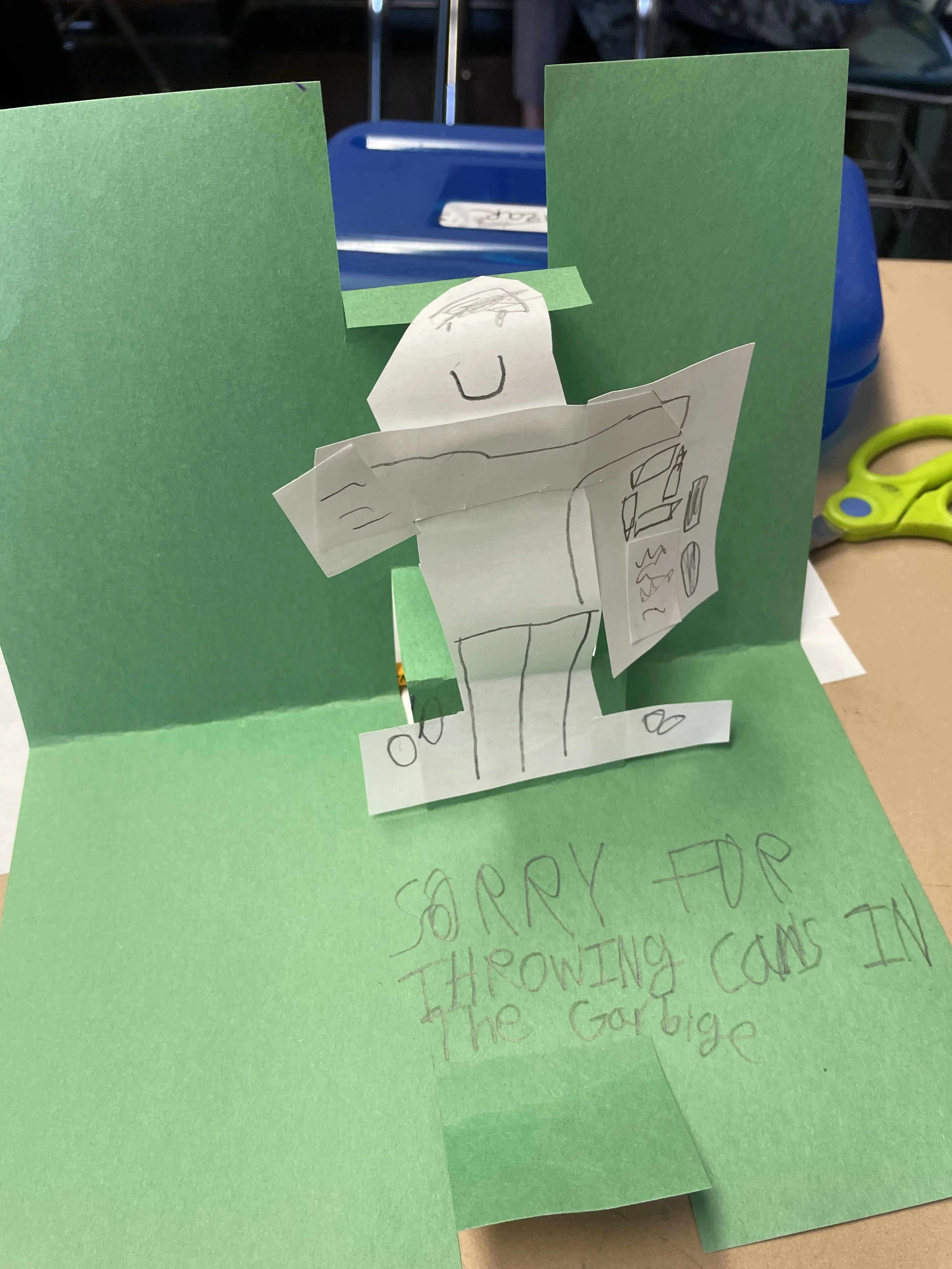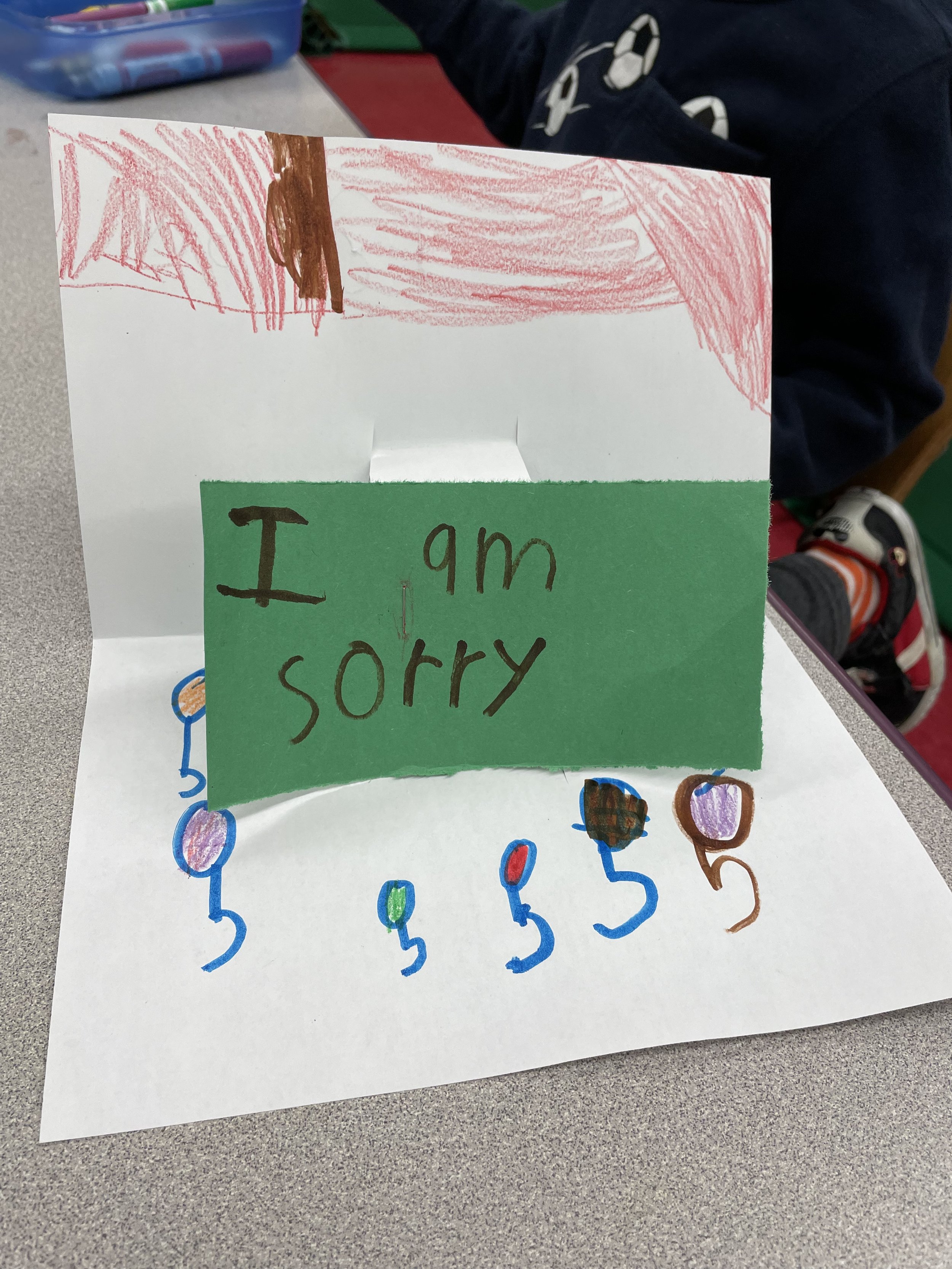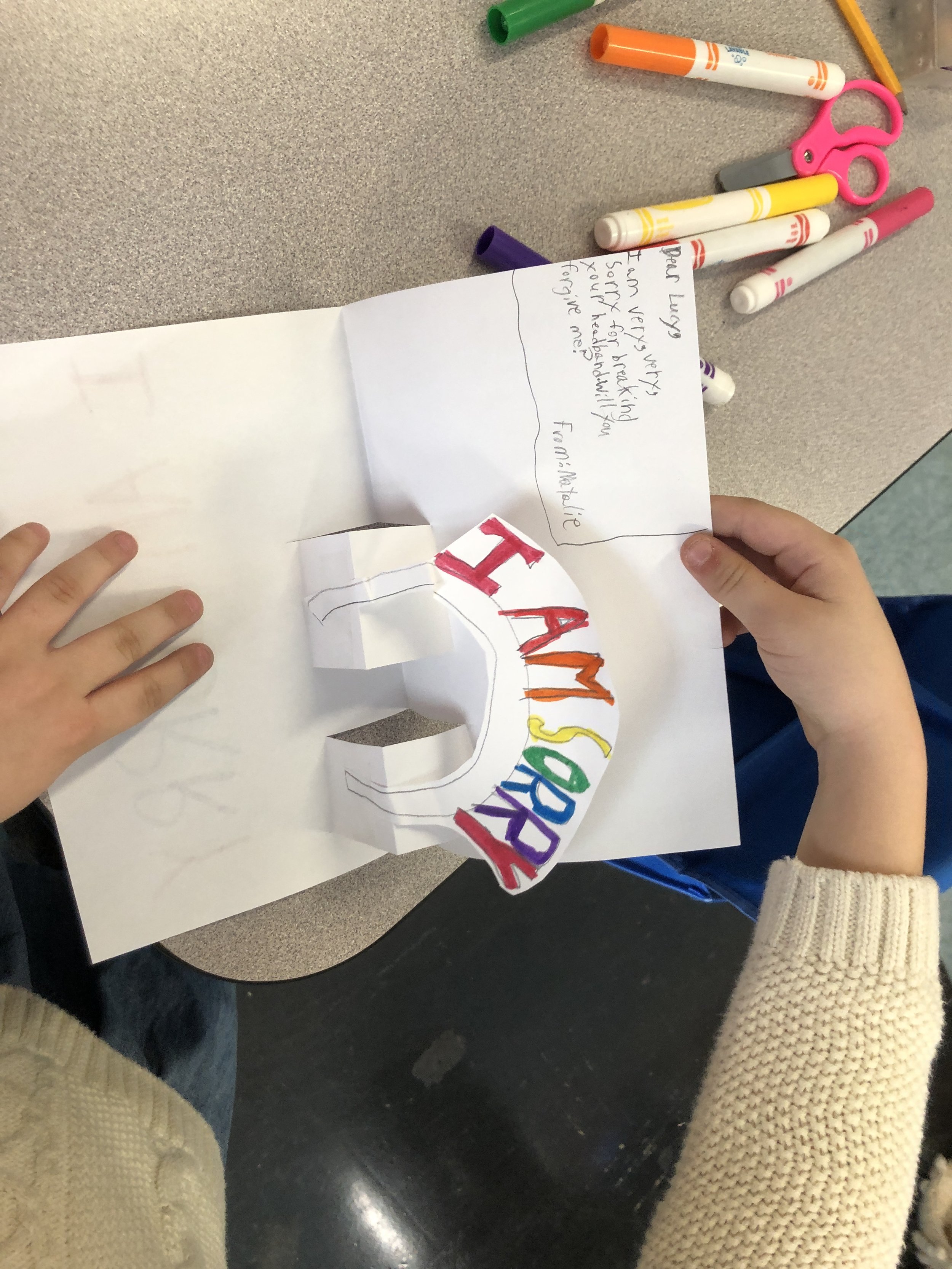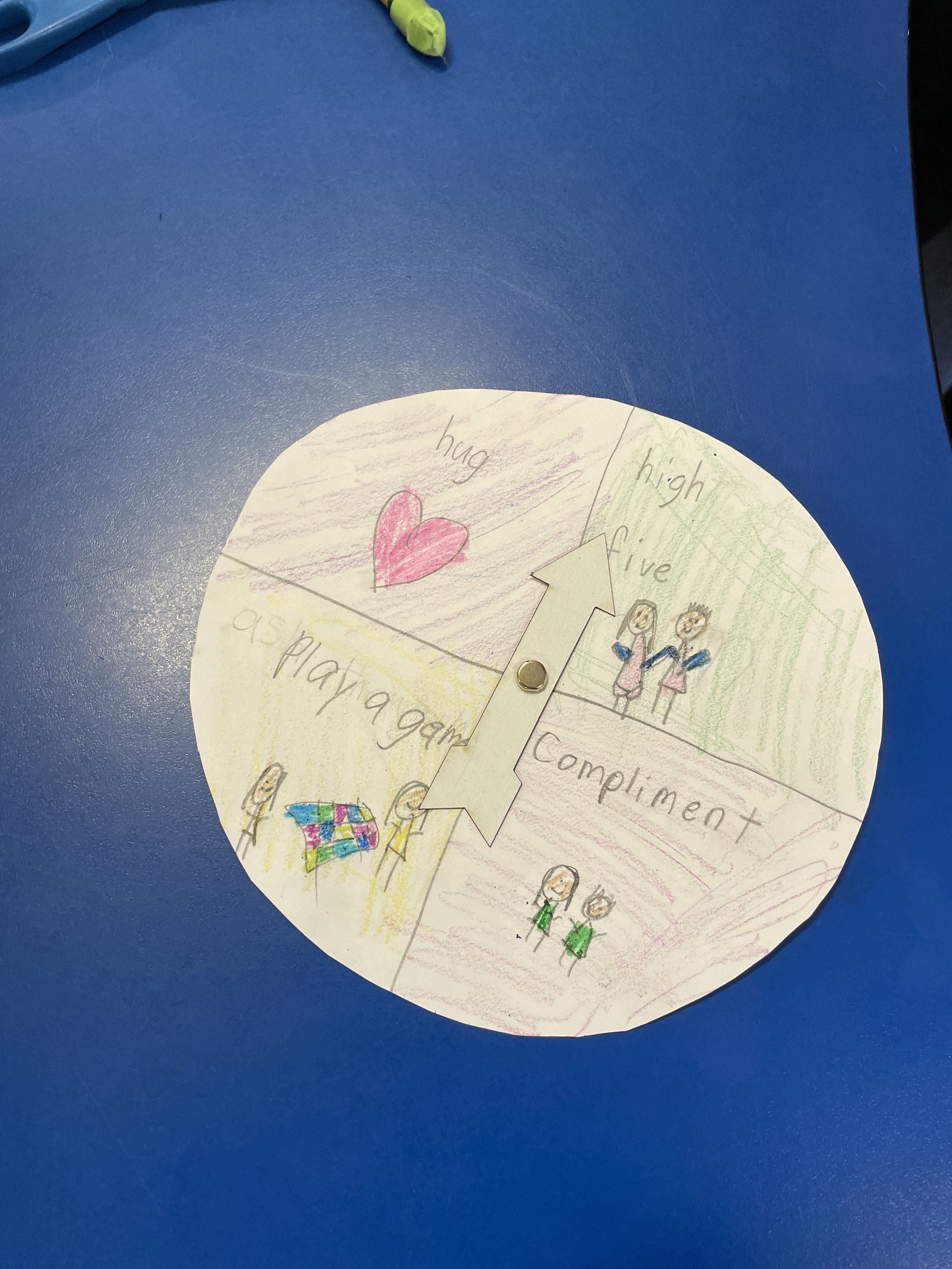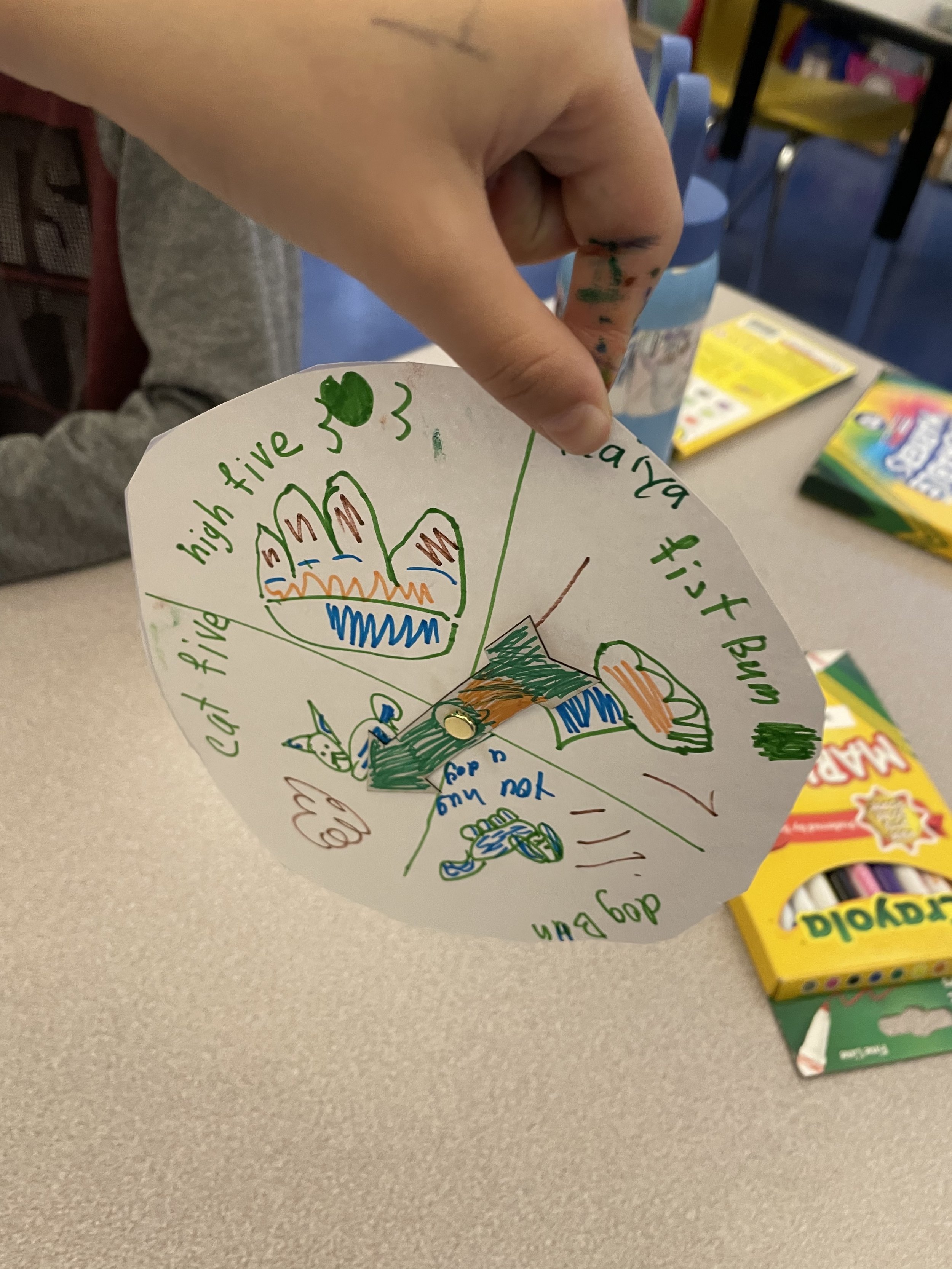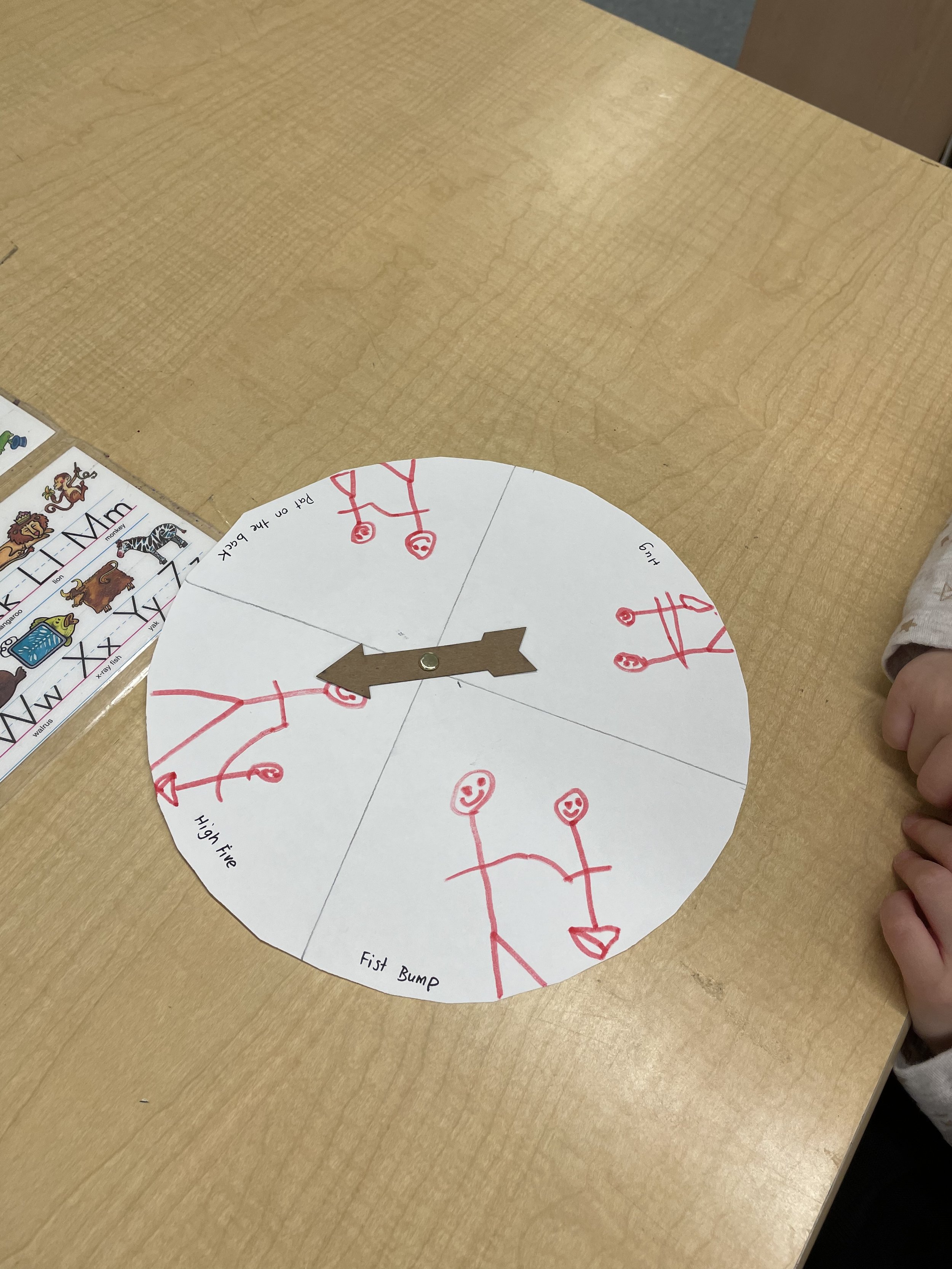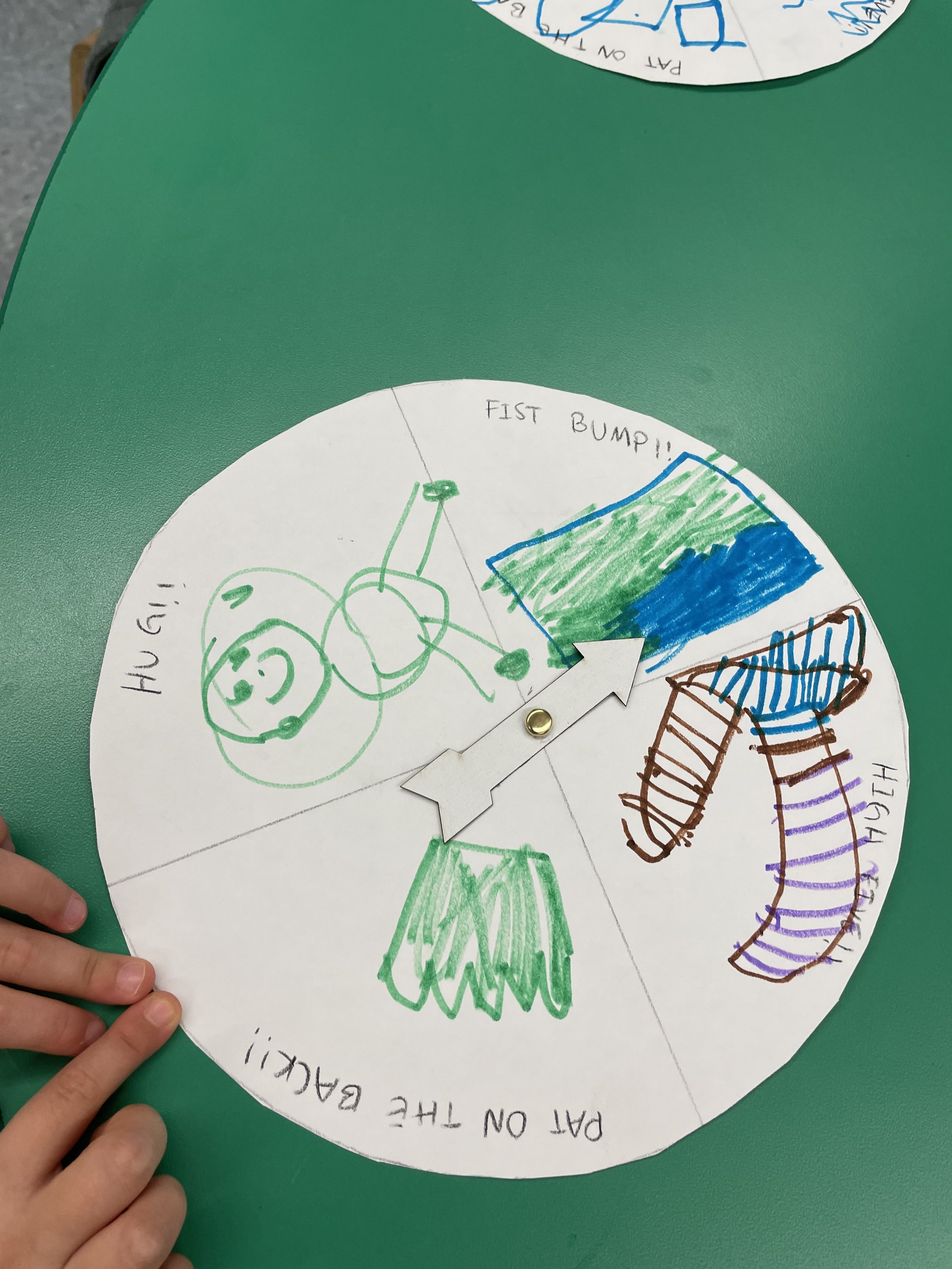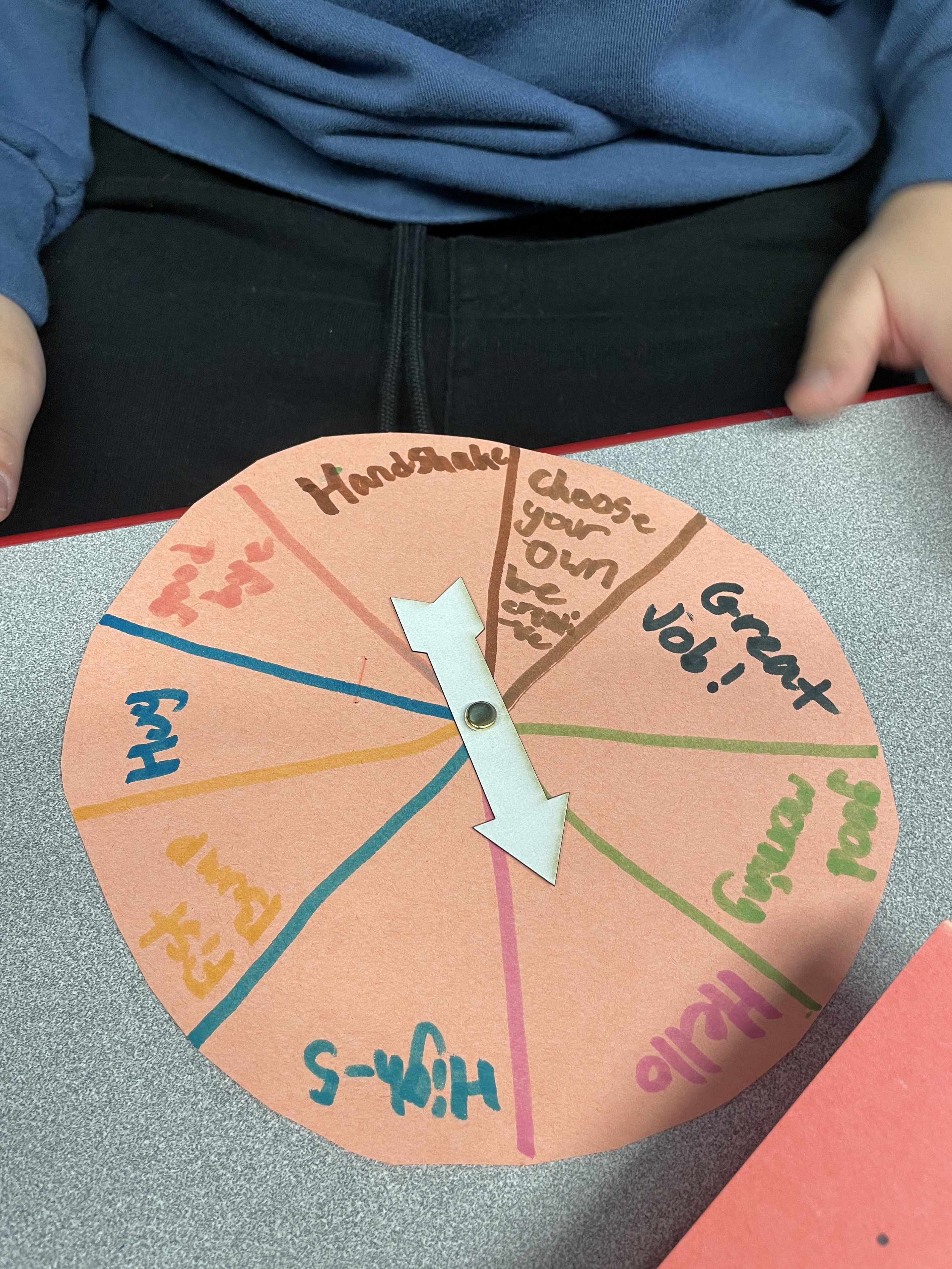Social Emotional Learning & Creative STEM for PS33 Students
For kids with GIANT hearts who can forgive! We joined students at PS33, kindergarten through 5th grade, for a three-week Social Emotional Learning (SEL) program focused on forgiveness, taught as part of their enrichment program during school hours. Together, we learned how to express our feelings when we feel angry or disappointed at someone, how we can forgive them, and ways we can show our forgiveness to make our friendships stronger.
This program was part of a one year SEL curriculum with four units covering compassion, forgiveness, courage, and gratitude. Teachers from PS33 reached out to our team to collaborate with them in planning and integrating hands-on creative STEM projects in the “forgiveness” unit. The goal was for students to engage more with the content through hands on building and making, and to reflect on and express their learnings through their projects. We also wanted to provide an avenue for students to practice mindfulness, to use their language as they try to make sense of their feelings when they are angry at someone, and to practice saying “I’m sorry” if they hurt someone. This collaboration was made possible through a generous grant by Riley's Way Foundation.
What does forgiveness mean and how we can ask for it?
We started our first session by talking about what forgiveness means, and ways we can ask or show forgiveness. Giving cards with thoughtful messages is a great way to show and ask for forgiveness. We introduced students to age appropriate techniques they can use to make their own “I forgive you” pop-up cards and encouraged them to include messages about forgiveness, and to gift it to someone they like. We found that it’s important to provide examples students can relate to or even better build off an example that a student brings up during the class - it can be big or small - something that may have just happened with a friend at school or a sibling at home. Students made cards for their pets, parents, and friends using a variety of techniques such as parallel folds and accordion fold and included kind messages that melted our hearts.
A strategy to let go of our anger
We started our second session by reminding students about the topic of forgiveness and asking them how they can let go of their anger if they are not happy with a situation. One strategy is to reflect on our emotions, be mindful of our own bodies and feelings, listen to music, and make art based on how we feel to help us let go of our anger. During the session, we reflected on our feelings as we listened to music, drew and painted based on how we felt, and then ripped up our work, practiced forgiving each other (and ourselves) and made a beautiful collage together. Our instructors reminded students that even though it was hard to have their paper ripped up, the end product would be worth it because they collaborated with each other to make something even more beautiful. Life is about working together to create wonderful things, and the activity was a great example of it.
A game to help us forgive
Third session was focused on the art of forgiveness and we practiced ways we could show someone that we have forgiven them and reflect on the jot of letting go. We started the session by playing a dice game with a twist! Every number that we rolled corresponded to numbers of times we had to do a particular “forgiveness” action. For example, high-five four friends four times, or give a pat on the back of a friend, fist bump two friends twice, give a thumbs up to six friend. We also included some context like telling each other good things or complimenting each other.
We then designed our own spinner games and thought of what we could do or say to forgive someone. We played with our spinners and role-played different scenarios with our friends!
Throughout the series, students practiced talking about their emotions of anger, disappointment, and sadness; reflected on ways they can forgive others; and practiced the act of forgiveness. This series was a wonderful combination of social emotional learning, arts, crafts, and design.
Mental health is an important part of children’s overall health and well being. According to American Psychological Association, after two years of pandemic due to COVID-19, children’s mental health is in crisis, and so the association has called schools to intervene. In 2020, Ann & Robert H. Lurie Children’s Hospital of Chicago surveyed 1,000 parents around the country to understand their experiences managing their children’s mental health. Seventy one percent of parents said the pandemic had taken a toll on their child’s mental health, 69% said the pandemic was the worst thing to happen to their child, 67% wish they’d been more vigilant about their child’s mental health from the beginning. According to data reported by CDC, mental health–related emergency department visits increased 24% for children ages 5 to 11 from March 2020 to October 2020.
Mental health in childhood involves understanding their emotions, learning how to express and handle their emotions, healthy social skills and ways to cope when there are problems. A child’s mental health is an important part of their overall wellbeing and quality of life and has direct effect on their learning and development. National Education Association has called for Social Emotional Learning (SEL) to be a priority for schools during COVID-19 crisis. Supporting students’ SEL can help students to smoothly transition back to school, adapt to new circumstances, cope with stressors, have a healthy social life, and have the mind capacity to focus on their academics. We are extremely honored to have had the chance to play a small part in PS 33 students’ SEL journey and take pride in their inspiring projects, reflections, and mindfulness practices during the program.
If you are a school admin, educator, or a parent who would like to bring a similar program to your community, please reach out to us demand@thegiantroom.com to start planning! We also encourage you to integrate some of the activities we have outlined in this post in your own practices.
